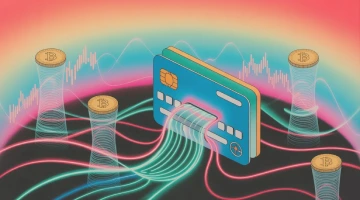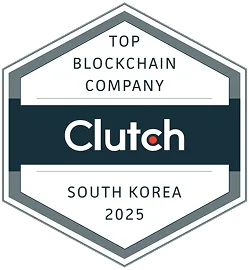Transit Your Game from Web2 to Web3: Why and How

Just picture a gaming world where players truly own their in-game assets, can trade them with others seamlessly, and even make a profit from their dedication. This isn't just a fiction — it's now the reality of Web3 game development, and it's changing the industry.
But what if you're a business owner of a Web2 game? How can you make the most of this opportunity and stay ahead of the competition? Transiting your existing game to Web3 could be the ultimate move for you.
In this article we go deep into the transformation from Web2 to Web3 gaming, answering all your key questions and showing you the main benefits that await your business. We'll break down the "why" and "how" of Web3 transition, explaining how it can open up a whole new level of player engagement, revenue streams, and long-term success for your game!
Understanding Web2 vs. Web3
The internet has gone through some big changes recently. We've gone from Web1 to Web2, and now we're moving on to Web3. If you want to use the latest technologies, it's important to understand these changes. Especially in industries like gaming, where user experience and engagement are paramount.
What is Web2?
Web2, often referred to as the "social web," represents the Internet as we know it today. It emerged in the early 2000s, bringing a more interactive and social experience compared to the static web pages of Web1. Web2 is characterized by user-generated content, social media platforms, and the widespread use of mobile devices.
Key Features of Web2:
- Interactivity and User-Generated Content: Platforms like Facebook, X (ex Twitter), and YouTube allow users to create, share, and interact with content.
- Centralization: Web2 is dominated by centralized services where data is stored on servers controlled by corporations like Google, Amazon, and Meta.
- Monetization Through Advertising: Many Web2 services are free to use, funded by advertising revenue based on user data.
- Improved User Experience: Enhanced web technologies (AJAX, HTML5) let us build more dynamic and responsive apps.
What is Web3?
Web3, also known as the "decentralized web," is the next big thing in the Internet world. It uses blockchain technology to make data and apps more decentralized, with the goal of creating a more open, secure, and user-centric online environment. Web3 introduces concepts like cryptocurrencies, decentralized finance (DeFi), and non-fungible tokens (NFTs).
Key Features of Web3:
- Decentralization: Unlike Web2, Web3 applications (dApps) run on blockchain networks, distributing data across a global network of nodes.
- Enhanced Security and Privacy: Web3 aims to give users more control over their data and privacy through cryptographic methods.
- True Digital Ownership: Through NFTs and blockchain, users can own and trade crypto assets independently of any central authority.
- Incentivization: Web3 platforms often use tokens to incentivize participation and reward users, aligning interests of developers and users.
This Web2 to Web3 transition is impacting a wider range of industries than you might think. Here are some key examples:
- Social Media: Centralized social media platforms like Facebook and Instagram hold immense power over user data. Web3 is offering an alternative with the rise of Web3 social media apps development. These apps, built on blockchain, let users own their data and control how it's used. Imagine a platform where you can control your newsfeed algorithm and your data cannot be sold to advertisers. This makes the online experience more secure and user-centric.
- Real-World Asset Tokenization: Our physical world is also being transformed by Web3 thanks to RWA tokenization. Valuable assets like property, artwork, and even collectibles can be tokenized on blockchains. This process creates a blockchain representation of the asset, allowing it to be easily divided into smaller pieces (fractional ownership) and traded on specialized NFT marketplaces.
- Decentralized Infrastructure Management: The way we manage physical infrastructure is also undergoing a transformation. DePINs (Decentralized Physical Infrastructure Networks) are a new approach where physical assets like data centers or communication towers are collectively owned and managed by a community. Users contribute resources to the network (storage space, bandwidth) and earn rewards through tokenized incentives.
These are just a few examples of how Web3 development is disrupting various industries. And of course, this transition affects gaming in a big way. Let’s dive in and look at the details.
Key Differences Between Web2 and Web3 Game Development
As the gaming industry rapidly changes, moving from Web2 to Web3 game development is a big shift in how games are made, managed, and played. It's important for businesses thinking about creating Web3 games to understand these differences. Here are the main of them:
1. Ownership and Control
- Web2: In Web2 game development, game assets and data are stored on centralized servers controlled by the game developer or publisher. Players have limited ownership rights, meaning their in-game purchases and progress are tied to the game’s ecosystem and cannot be transferred or sold outside the game.
- Web3: Web3 game development leverages blockchain technology to enable true digital ownership. Players own their in-game assets on a decentralized ledger. This means players can trade their assets outside the game environment, providing them with more control and value from their investments.
2. Transparency and Security
- Web2: Centralized servers in Web2 games are vulnerable to hacking and data breaches. The game’s code and transactions are not transparent to players, which can lead to trust issues regarding fairness and data handling.
- Web3: Web3 game development enhances security and transparency by using blockchain technology. All transactions and game data are recorded on a public ledger, which is immutable and transparent. This reduces the risk of hacking and ensures that all game activities are verifiable and tamper-proof.
3. Economic Models and Monetization
- Web2: Monetization in Web2 games typically relies on in-app purchases, subscriptions, and advertisements. Players spend money on virtual goods and enhancements, but they do not gain any real-world value from these purchases.
- Web3: Web3 game development introduces innovative economic models such as play-to-earn, where players can earn cryptocurrencies or NFTs through gameplay. These tokens can be traded or sold for real-world value, creating new revenue streams for both players and developers. Additionally, developers can earn royalties on secondary sales of NFTs, providing ongoing revenue opportunities.
4. Community Engagement and Governance
- Web2: When it comes to engaging with communities in Web2 games, the usual channels are forums, social media, and in-game events. Players don't have much say in how the game is developed or governed.
- Web3: Web3 game development fosters deeper community engagement through decentralized governance models. Players can participate in decision-making processes using governance tokens, voting on game updates, features, and policies. This creates a more engaged and invested community, as players feel their contributions and opinions matter.
5. Interoperability and Portability
- Web2: Web2 games often have their assets and progress confined to a single game or platform. It's not easy to move data or assets between different games or platforms.
- Web3: Web3 game development promotes interoperability, allowing assets to be used across different games and platforms. NFTs and tokens can be transferred between games, creating a more seamless and integrated gaming experience. This interoperability also opens up opportunities for collaborations and partnerships between different game developers.
6. Decentralized Finance (DeFi) Integration
- Web2: Traditional Web2 games do not integrate decentralized finance elements. Economic activities within the game are confined to the game’s ecosystem and are controlled by the developer.
- Web3: Web3 game development can integrate DeFi elements such as staking, liquidity pools, and yield farming. Players can earn rewards by participating in these financial activities, adding another layer of engagement and economic interaction within the game.

The shift from Web2 to Web3 game development is a big change for the gaming industry. For businesses, especially in the gaming industry, understanding and embracing Web3 can open up new blockchain game development opportunities for innovation and engagement. Web3 game development, in particular, offers better security, more player ownership, and new economic models that can totally change the gaming experience. By moving from Web2 to Web3, developers can create more engaging, secure, and player-centric games and stay ahead of the curve in a rapidly evolving digital landscape.
Benefits of Transiting Games to Web3
Transiting games from Web2 to Web3 offers numerous advantages that can significantly enhance a business's growth, competitiveness, and profitability. Here are some of the key benefits businesses can gain from Web3 game development:
1. New Revenue Streams
Web3 game development opens up innovative monetization opportunities. By integrating NFTs and cryptocurrencies, businesses can create new revenue streams such as:
- In-Game Marketplaces: Allowing players to explore and trade assets.
- Play-to-Earn Models: Rewarding players with tokens that can be traded or used within the game's ecosystem.
- Royalties on Secondary Sales: Earning a percentage every time an NFT is resold.
These new models can significantly boost a game's revenue potential and profitability.
2. Greater Community Engagement
Web3 games can use decentralized governance models, where players have a say in the game's development and future through token-based voting systems. This increased community involvement makes players feel like they own the game and are loyal to it. If people are engaged with the game, they’re more likely to spread the word and get involved in the game’s ecosystem.
3. Community Trust
Web3 game development makes sure that game data and transactions are stored on a decentralized blockchain, which is an immutable and transparent ledger. This means there's less chance of hacking and fraud because the data isn't stored on a single central server. Security is a big part of building trust with players, which in turn leads to increased user retention and engagement.
4. True Digital Ownership
One of the standout features of Web3 game development is the introduction of Non-Fungible Tokens. NFTs allow players to own, trade, and monetize in-game assets outside the game environment. This true digital ownership can lead to higher engagement, as players see real-world value in their virtual assets. For businesses, this means a more loyal and active player base.
5. Attracting New Audience
Adopting Web3 game development can attract a new demographic of tech-savvy players who are interested in blockchain technology, cryptocurrencies, and NFTs. This audience is often more willing to invest time and money into innovative gaming experiences, providing a lucrative market for forward-thinking game developers.
6. Future-Proofing the Business
As blockchain technology keeps on developing, staying on top of Web3 game development is the way to stay competitive in a fast-changing industry. If companies jump on these innovations early, they can establish themselves as leaders in the next generation of gaming, attracting investors and partners looking to be part of the Web3 revolution.
Key Components of a Web3 Integration to Web2 Game
Web3 integration to games involves integrating several key components that leverage blockchain technology to provide a decentralized, secure, and engaging experience for players. Understanding these components is essential for businesses considering Web3 game development. Here are the crucial elements:
1. Smart Contracts
Smart contracts are self-executing programs with the conditions written into code. In Web3 game development, GameFi smart contracts automate game mechanics, ensuring transparent and tamper-proof operations. They handle:
- In-game transactions: Buying and selling assets.
- Reward distribution: Automating the allocation of tokens or NFTs to players.
- Game logic: Enforcing rules and ensuring fair play without the need for a central authority.
2. Non-Fungible Tokens (NFTs)
NFTs are unique blockchain assets that may represent in-game items such as characters, skins, weapons, or virtual land. Key benefits of using NFTs in Web3 game development include:
- True ownership: Players have verifiable ownership of their blockchain assets, which can be traded on various marketplaces.
- Interoperability: NFTs can be used across different games and platforms, enhancing their value, utility and liquidity.
- Rarity and Collectibility: NFTs can represent rare items, creating a market for collectible in-game assets.
3. Decentralized Finance Elements
Integrating DeFi elements into a Web3 game can enhance the economic aspects of the game. This includes:
- Tokenomics: Designing a robust in-game economy using cryptocurrencies or tokens that players can earn, trade, and invest.
- Staking: Allowing players to lock their tokens to earn rewards, participate in governance, or unlock special features.
4. Interoperability and Cross-Platform Play
A significant advantage of Web3 game development is the ability to create assets and experiences that transcend individual games. Interoperability allows:
- Asset Portability: Players can transfer their NFTs and tokens between different games and platforms, enhancing their overall gaming experience.
- Collaborations: Game developers can work together to share assets and features, which helps create a more connected gaming ecosystem.
5. Decentralized Governance
Decentralized governance gives players a voice in the development and management of the game. This can be implemented through:
- Token-based Voting: Players use governance tokens to vote on key decisions, such as game updates, new features, or community policies.
- Community Proposals: Allowing players to propose changes or improvements, fostering a more engaged and invested player base.
6. Blockchain Integration
The foundation of any Web3 game development is its underlying blockchain technology. Choosing the right blockchain for your project is crucial for:
- Scalability: Ensuring the game can handle a large number of transactions and players without performance issues.
- Security: Providing robust security features to protect against hacks and fraud.
- Compatibility: Ensuring compatibility with existing blockchain ecosystems and tools to enhance functionality and user experience.
7. User Experience (UX) Design
Despite the technical complexities of Web3 game development, delivering a seamless and intuitive user experience is paramount. This includes:
- User-friendly Wallet Integration: Simplifying the process of connecting and using crypto wallets for transactions and asset management.
- Clear Onboarding Process: Educating new players about blockchain features and guiding them through initial setup steps.
Integrating these key components in Web3 game development enables businesses to create innovative, secure, and engaging gaming experiences.
Steps to Transit Your Game from Web2 to Web3
Transitioning a game from Web2 to Web3 can be a complex process, but with the right approach and expertise, it can be highly rewarding. Here are the steps for transitioning your Web2 game to Web3.
1. Define Objectives and Requirements
Firstly, you need to define clear objectives and requirements for a transit. This step involves:
- Setting goals: Determining what you aim to achieve with the Web3 transit (e.g., enhanced security, new revenue streams, player ownership).
- Identifying key features: Deciding which Web3 components (smart contracts, NFTs, DeFi, and others) to integrate.
- Budget and timeline: Establishing a budget and realistic timeline for the project.
2. Assess Your Current Game Architecture
Evaluate your existing game architecture to understand its current state and identify areas that need modification or enhancement. This includes:
- Technical audit: Analyzing the codebase, infrastructure, and dependencies.
- Feature assessment: Identifying which features can benefit from Web3 transition.
- User experience review: Ensuring a seamless transition for current players.
3. Choose a Web3 Development Company
The next crucial step is to select a reputable and experienced Web3 development company. This company will guide you through the entire process, providing the technical expertise and support needed to successfully transit your game. Look for a company with:
- Proven track record: Check their portfolio for successful Web3 projects development.
- Technical expertise: Ensure they have expertise in blockchain technologies, smart contracts, NFTs creation, DeFi development, and, of course, GameFi development.
- End-to-end support: Choose a company that offers comprehensive services from planning to post-launch support.
4. Choose the Right Blockchain Platform
Choosing the right blockchain platform is critical for the success of your Web3 game development. The Web3 development company will help you choose a platform that meets your needs based on:
- Scalability: Ensuring the platform can handle large volumes of transactions.
- Security: Providing robust security features to protect against hacks.
- Interoperability: Ensuring compatibility with other blockchain ecosystems.
- Developer support: Availability of tools and resources to facilitate development.
5. Tokenomics Development
To enhance the economic aspects of the game, the Web3 development company will help you to create tokenomics of your game:
- Tokenomics: DeFi mechanics like tokenomics empower players to earn, trade, and even invest in-game tokens, fostering a thriving marketplace. Many successful games leverage dual tokenomics, with a utility token for everyday activities and a governance token for players to influence the game's development. It's a win-win, creating a vibrant in-game economy and deeply engaged players.
6. Smart Contracts Development
The Web3 development company will design and implement smart contracts to automate game functions and ensure transparency. Smart contract development involves several technical steps:
- Writing Smart Contracts: Smart contracts are coded using programming languages like Solidity for Ethereum. These contracts will handle various game mechanics such as in-game transactions, rewards distribution, and user interactions.
- Game Mechanics: Game developers define and code the game logic within smart contracts. This includes rules for asset creation, player interactions, and event triggers. For instance, if a player completes a mission, the smart contract can automatically reward them with tokens or NFTs.
- Token Standards: The development team create and deploy tokens using standards like ERC-20 for fungible tokens or ERC-721 for NFTs on Ethereum and TRC-20 or TRC-721 for TRON. These standards ensure interoperability and ease of integration with crypto wallets and marketplaces.
7. Test and Optimize
Before launching, it’s essential to test and optimize the transited game to ensure a smooth user experience. The Web3 development company will:
- Conduct comprehensive testing: Performing unit, integration, and user acceptance testing.
- Security Audits: Conducting thorough security audits to identify and fix any vulnerabilities in the smart contracts and overall game infrastructure.
- Optimize performance: Ensuring the game runs efficiently on various devices and platforms.
- Address feedback: Making necessary adjustments based on player feedback during beta testing.
8. Launch and Deployment
With testing and optimization complete, the Web3 development company will assist in the final steps to make your game accessible to players on the mainnet. This step includes:
- Deploy to Mainnet: Launch the game on the selected blockchain mainnet, making it live and accessible to players.
- Integrate Wallets: Ensure players can connect their crypto wallets for transactions and asset management.
- Monitor Launch: Closely monitor the launch to address any immediate issues or bugs that arise.
9. Post-Launch Support and Updates
After the game is live, continuous support and updates are crucial for maintaining player interest and addressing issues. A robust Web3 development company will provide:
- Ongoing maintenance: Ensuring the game remains secure and bug-free.
- Feature updates: Adding new features and content to keep the game fresh and engaging.
Transiting your game from Web2 to Web3 involves a series of strategic steps that require technical expertise and careful planning. By partnering with a proficient Web3 development company, you can seamlessly transition to a decentralized, secure, and engaging gaming experience that offers numerous benefits, including enhanced player ownership, new revenue streams, and greater community engagement.
Why Choose Rock’n’Block for Your Web3 Game Development?
Choosing the right partner for your Web3 game development is crucial. Rock’n’Block stands out as a leader in the industry, offering unparalleled expertise and a proven track record of delivering top-notch blockchain solutions. Here’s why Rock’n’Block is the perfect choice for your Web3 game development needs.
Proven Expertise with 300+ Blockchain Solutions Delivered
With over 300 successful blockchain solutions delivered, Rock’n’Block has established itself as a trusted name in the industry. Our extensive portfolio showcases a wide range of projects, from DeFi apps to NFT platforms and GameFi development. This vast experience ensures that we can handle any challenge your Web3 game development project may present.
15+ Years of Custom Blockchain Development
Rock’n’Block’s team brings over 15 years of experience in custom blockchain development. This deep understanding of blockchain technology, combined with our ability to adapt and innovate, allows us to create tailored solutions that meet your specific needs. Our long-standing presence in the industry is a testament to our commitment to excellence and our ability to deliver results.
50+ Innovative Web3 Technology Services
At Rock’n’Block, we offer over 50 innovative Web3 technology services, ensuring that we can provide a comprehensive solution for your blockchain game development needs. From tokenization and smart contract development to NFT integration and decentralized finance features, our wide array of services covers all aspects of Web3 game development. This all-in-one approach simplifies the process, making it easier for you to transit your game from Web2 to Web3 seamlessly.
Team of 150+ Blockchain Experts
Our team is made up of over 150 blockchain experts who are really passionate about pushing the boundaries of what’s possible with blockchain technology. This diverse and talented team brings together a wealth of knowledge and experience, so you can be sure that every aspect of your project is handled by professionals who are at the forefront of the industry. You can rest assured that your project is in good hands with Rock’n’Block.
Specialization in GameFi Development and Transitioning
Rock’n’Block has significant expertise in GameFi development, making us uniquely positioned to help you transition your game from Web2 to Web3. Our experience with game mechanics, tokenomics development, and player engagement strategies ensures that we can create a seamless and engaging gaming experience that leverages the full potential of blockchain technology. Whether you’re looking to integrate NFTs, implement play-to-earn models, or enhance community governance, we have the skills and knowledge to bring your vision to life.
Choosing Rock’n’Block for your Web3 game development means partnering with a company that has a proven track record, extensive experience, and a commitment to excellence. With our comprehensive range of services, expert team, and specialization in GameFi development, we are uniquely equipped to help you transition your game to Web3 and unlock its full potential. Embrace the future of gaming with Rock’n’Block and take your game to new heights!
For more information about our services and to discuss your project, please contact us. Let’s build the future of gaming together!
We ❤️ Development
Follow us on social media to receive the hottest blockchain development updates













%201.webp)



